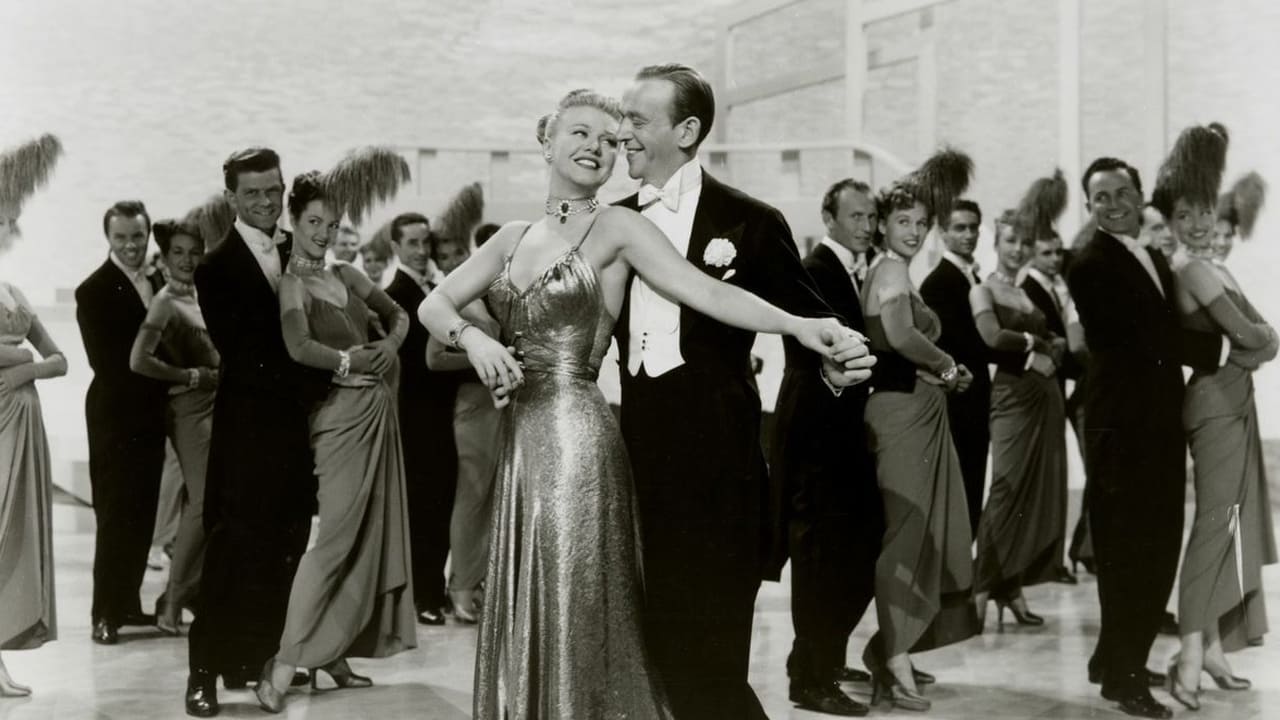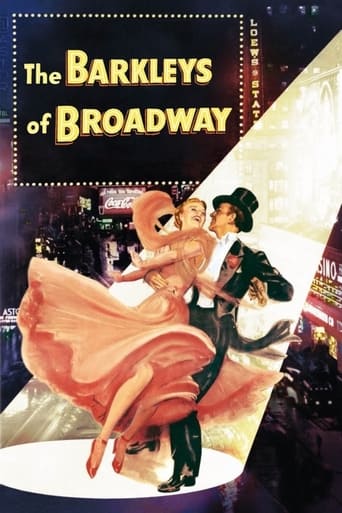

I wanted to like it more than I actually did... But much of the humor totally escaped me and I walked out only mildly impressed.
... View MoreYour blood may run cold, but you now find yourself pinioned to the story.
... View MoreIt is interesting even when nothing much happens, which is for most of its 3-hour running time. Read full review
... View MoreClose shines in drama with strong language, adult themes.
... View MoreWell, looks like good ol' Nostalgia ruled the day on this viewing. I was wowed with their first color installment and mesmerized with the still beautiful Rogers. She was only 38 mind you but don't think she danced much for many years. The crazy shoe dance was fun trying to determine the special effects used and seeing Fred in a skirt was a hoot.I kept waiting for them to dance like they used to, face to face, but Fred held onto that cane for dear life. Could he not lift her anymore for that fabulous lift/twirl that immortalized the couple in "Swing Time" or maybe it was "Top Hat" or ??? Dang can't recall the exact title but you know the routine. However, in the last dance segment he did her a twirl with his back to the camera, a stand-in??? I enjoyed watching Oscar tickle the ivories in the Sabre Dance and Tchaikovsky's B Flat wild renditions. Sadly Dorothy was unavailable for the Wizard Dance but delighted to see my favorite dancers unite in harmony.High recommend for the last hurrah of the greatest duo of the thrillin' thirties musicals.
... View MoreEven when such an iconic partnership like Fred Astaire and Ginger Rogers are in a film that doesn't showcase their talents as well as their previous outings, you can still enjoy the film on its own. That is definitely the case with The Barkleys of Broadway, still a good enough film despite lacking compared to their previous films. The story may be far-fetched but considering that that component wasn't ever as strong as everything else in their films together that isn't as big an issue. More problematic is Ginger's La Marseillaise scene feeling forced, the Weekend in the Country number never shaking off the feeling that it would have been more suited to Judy Garland(the originally intended female lead, this song really doesn't play to Ginger's strengths) and some of Ginger's clothes- somewhat frumpy-looking here- not accommodating her lovely figure. The costumes, scenery and sets generally are sumptuous and the film is beautifully filmed. The score is lovely too with a sense of whimsy and wit, and while there have been more memorable songs in other Fred and Ginger outings the songs are still good. Shoes with Wings On is a charming and good-natured song that shows off Fred's skills as a dancer very well, Bouncin' the Blues is catchy and fun and anybody who want to see Fred and Ginger's dancing and chemistry will find pleasure in You'd Be Hard to Replace. The Highland Fling song is not particularly memorable but is fun to watch, the kilts are a nice touch. The dance duet of You Can't Take That Away from Me from Shall We Dance is musically and choreographically in a different league, nostalgic and moving it is very effective and doesn't feel out of place at all. The choreography is elegant and sparkling if not with new ideas(ie. dancing on roller-skates or girls on airplanes), and Fred and Ginger's dancing is as poised and athletic as it ever was. Their chemistry is very convincing too. The dialogue is smart and witty with a good amount of heart. Fred Astaire and Ginger Rogers are great here, Ginger may have lost some of her freshness, not helped by some frumpy outfits, but she is still sassy and beautiful. Fred is wonderfully chirpy and debonair, that comes through loud and clear in Shoes With Wings on. The supporting cast give solid performances, Oscar Levant brings some amusing touches and a fresh personality while playing the piano brilliantly, especially when it's as demanding as Tchaikovsky's Piano Concerto no.1(though not so much as Rachmaninov 3rd or particularly Brahms 2nd). Billie Burke is charming in her role. All in all, very enjoyable though a little disappointing too. 7/10 Bethany Cox
... View MoreFred Astaire (Josh) and Ginger Rogers (Dinah) play a married showbiz couple. They perform musical acts written by Fred but Ginger wants to break free and be taken seriously as an actress. Enter respected director Jacques Francois (Barredout) who casts Ginger in the lead role in his play about the young Sarah Bernhardt. Meanwhile, Gale Robbins (Shirlene) is after a little more from Fred other than being Ginger's understudy. We all know how things will work out, especially after seeing Ginger Rogers recite "La Marseillaise"! Contrary to popular belief, this is not the first time Fred and Ginger played a married couple. They were married to each other in their previous outing - "The Story Of Vernon and Irene Castle". In this offering, the film starts well with a couple of entertaining dances. Sadly, the film loses momentum and the songs and dances that follow aren't really up to standard. We watch because it is Fred and Ginger. In fact, it is Oscar Levant who comes away with the musical honours with his two piano performances. He also provides some of the better comedic moments with his 'can't be bothered' attitude and his popularity with the ladies. He's with a different woman in every scene - good on him! The highlight from Fred and Ginger's set pieces comes at the beginning of the film as they rehearse a piece called "Bouncin' The Blues". It comes just after Gale Robbins has been introduced and at a point in the film where the humour is spot on as Ginger Rogers clearly doesn't take very kindly to her. It's a good beginning to the film, and I found myself surprised at how good this offering actually was. Downhill from there, I'm afraid. While there are still some occasional funny moments, we have to endure some crap - the Scottish number is embarrassing, there is a nonsense song about going away to the country which is so obviously ripped off from "The Wizard of Oz" and designed with Judy Garland in mind, Fred's solo in a shoe shop alongside sets of dancing shoes is different but uninspiring, and their dance to "They Can't Take That Away From Me" belonged to an earlier film and seemed pointless and geared towards soppy reminiscence.Overall, the film had a typical family musical feel to it (as opposed to a Fred and Ginger style of film) and I half expected Dick Van Dyke to show up at any moment. If it wasn't for the fact that it is a Fred and Ginger film, I would have to consign it to the reject pile. They are a magical couple and their reputation is what just keeps this film above water. Thank goodness for "Bouncin' The Blues".
... View MoreSuch a wonderful movie - everything was perfect about it! The dancing was magical, the drama so moving, the music breathtaking (Dig those Oscar Levant pieces! I literally got energized by his rendition of Tchaikovsky). Fred and Ginger were a perfect pair; their love, hate, and teasing were adorable and sharp. The plot kept up with the music, balancing neither too much. Ginger's drama scene almost brought me to tears, even though I didn't understand the language of her speech. And Levant's wise-cracks and truly brilliant talent really left an impression with me. Fred, as always, sparkles with dancing perfection and a few lovely vocal numbers. A beautiful movie all around! As the final Fred/Ginger pairing, it shows that "you can't take (the magic) away" and that these two will never stop dancing in our hearts.
... View More